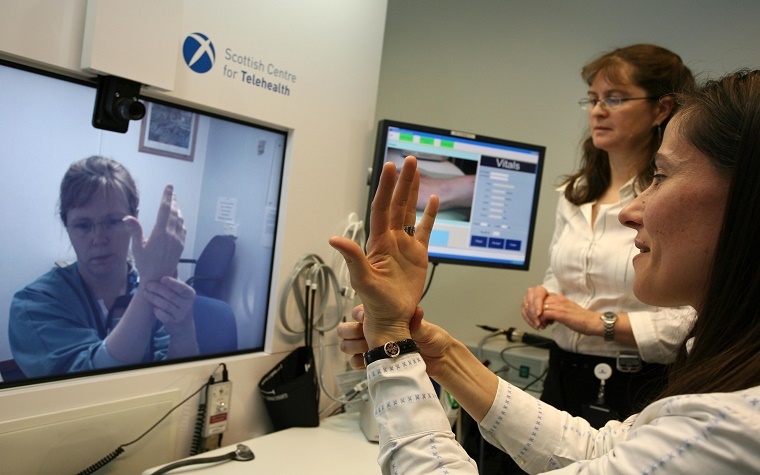
When a patient becomes ill or suffers an injury late at night or early in the morning, the most common course of action is to visit a hospital emergency room, which can be a very expensive proposition.
To meet that need, telehealth clinics are becoming increasingly available in more locations, through which a patient can connect with a health care provider at any time -- day or night.
Telehealth clinics allow doctors, nurses and other health care professionals to assess patients in real-time, using web-based audio and video tools like videoconferencing, remote patient monitoring and streaming media. Through these sessions, health care providers can advise patients about what their next steps should be. Providers can also call in prescriptions, if needed.
Telehealth clinics are not meant to replace traditional health services; rather, they have been developed as a complement to them.
The advantages of telehealth clinics are twofold: a patient can see a doctor quicker and at any time, and the costs are substantially lower for the patient. Recent studies have shown that telehealth services could save the Medicare program $1.8 billion over the next decade.
However, some states do not permit the use of telehealth clinics. Furthermore, Medicare and Medicaid, along with some private insurance providers, will not cover the costs of telehealth appointments. In many cases, these regulatory and financial barriers are preventing patients from getting the care they need. Statistics show that 42 percent of U.S. hospitals have the capabilities to use telehealth services, but laws and payment issues have made it so that only eight percent of those hospitals actually provide telehealth services.
Hospitals that regularly use telehealth clinics tend to be teaching hospitals or those that are part of larger systems. Hospitals in rural areas also have the capabilities, but they aren't using them.
Telehealth success stories are making officials take notice. The Medicaid and CHIP Reauthorization Act of 2015 (MACRA) included language meant to begin the process of eliminating barriers to payment for telehealth services. The act would take away special telehealth licensing requirements for out-of-state providers and modernize telehealth payment policies for Medicare and Medicaid.
Many of the nation's lawmakers are coming around and supporting efforts to make telehealth care easier for patients and providers alike. Those lawmakers include Sens. Brian Schatz (D-HI), Roger Wicker (R-MS), Thad Cochran (R-MS), Ben Cardin (D-MD), John Thune (R-SD) and Mark Warner (D-VA), who have co-authored legislation aimed at making telehealth services more accessible to all patients. The Telehealth Modernization Act was introduced by Reps. Doris Matsui (D-CA) and Bill Johnson (R-OH), while Reps. Fred Upton (R-MI) and Diana DeGette (D-CO) co-authored the 21st Century Cures initiative, which would remove payment barriers for telehealth services.
Many of the nation's accountable care organizations (ACOs), bundled payment providers and patient-centered medical homes (PCMHs) are also developing plans to put telehealth programs in place.